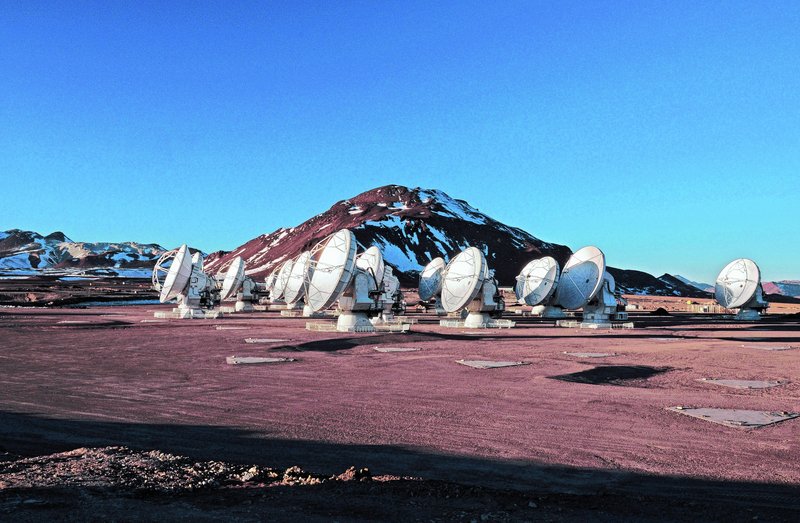SANTIAGO, Chile – A huge and powerful new telescope has begun probing the universe from a high-altitude plateau in northern Chile, and astronomers hope it will reveal the earliest dawn of the cosmos.
The ALMA telescope uses radio technology to see wavelengths of light that are much longer than what’s visible to the human eye, and much colder than what shows up in infrared telescopes. This allows astronomers to see some of the darkest and coldest regions of space — areas where galaxies are created, stars are formed, and planets form around those stars.
“With millimeter and submillimeter waves, we can watch star and planet formation, investigate astrochemistry, and detect the light that is finally reaching us from the universe’s earliest galaxies,” Alison Peck, a deputy project scientist at ALMA observatory, said Monday.
The international observatory — ALMA stands for the Atacama Large Millimeter/submillimeter Array — links an array of radio antennas to act as a single giant telescope.
So far, just the first 16 of a planned 66 huge antennas have been set up at a spot 16,400 feet above sea level in Chile’s northern desert, where the air is so thin that Earth’s atmosphere causes less interference.
Even so, the observatory already has begun capturing images different from anything seen by visible-light and infrared telescopes.
Information from each antenna is then assembled into a single large view by one of the world’s fastest supercomputers, the ALMA Correlator, which can perform 17 quadrillion operations per second. More than 900 teams of astronomers around the world competed to become some of the first to use the array, said Lewis Ball, ALMA’s deputy director.
“The project has been coming now for something like 28 years,” Ball said. “It is very likely that even in this first period of ALMA science observing we will learn things about the universe that we do not know today.”
Copy the Story Link
Send questions/comments to the editors.



Success. Please wait for the page to reload. If the page does not reload within 5 seconds, please refresh the page.
Enter your email and password to access comments.
Hi, to comment on stories you must . This profile is in addition to your subscription and website login.
Already have a commenting profile? .
Invalid username/password.
Please check your email to confirm and complete your registration.
Only subscribers are eligible to post comments. Please subscribe or login first for digital access. Here’s why.
Use the form below to reset your password. When you've submitted your account email, we will send an email with a reset code.